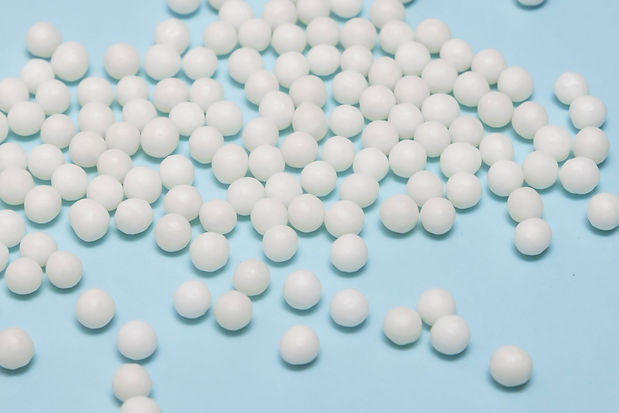Diverticulitis is a sectional inflammation that mostly occurs in the area of the colon called the sigmoid colon.
Accumulation of feces in the pockets damages the lining of the colon, causing infection and can result in more severe conditions, such as intestinal punctures and leakage of feces rich in pathogenic bacteria into the abdominal cavity.
Other complications that can occur include infectious abscess, fistulas, obstructions, and bleeding.

The impact of diverticulitis isn’t limited to the gut. Ongoing inflammation can have systemic effects, influencing the brain, mood, skin, and joints. Research shows that people with diverticular disease have a higher incidence of anxiety and depression, which is thought to be linked to the “gut-brain axis”—a bidirectional communication system between the gut and the brain Chronic inflammation and gut dysbiosis (imbalanced gut bacteria) can trigger the release of pro-inflammatory molecules that affect neurotransmitter levels and brain function, potentially leading to fatigue, anxiety, and even structural changes in the brain. The skin and joints may also be affected as inflammation spreads and the immune system remains activated.
Pouches are small and bulging pockets that form in the lining of the colon, these pouches are also called Diverticula. When a pouch occurs, it usually includes the three layers of the intestinal wall, including the layer of muscle and the membrane of the
intestinal cavity.
This condition is called Diverticulosis.
Diverticulosis is common, especially after the age of 40, and seldom causes problems.
Usually, the formation of the pouches is caused by high pressure in the colon. The high prevalence of this condition in the western world seems to be linked to high-stress levels and a low-fiber diet.
Lack of dietary fiber leads to low volume stool and constipation. Healthy fecal volume causes the colon to expand to contain the feces. A non-expanding colon can create higher pressure within itself and thus lead to the formation of the pouches.
Diverticulosis is a harmless condition but in some cases, the small pockets inside the colon get infected or inflamed, which means that the diverticulosis turned into diverticulitis, and this is a more serious problem.
In the past diverticulitis was mainly associated with old age. But unfortunately, not anymore. I see more and more young people aged 30+ who are dealing with this problem and seeking the right treatment..
Why Test Your Gut Bacteria When You Have Diverticulitis?
When those small pouches in your colon become inflamed or infected with diverticulitis, there's actually a lot happening beneath the surface that regular tests might miss. Looking at your gut microbiome—the collection of bacteria living in your digestive tract—can reveal important clues about your condition.
Have you ever wondered if your symptoms are definitely diverticulitis or perhaps something else? Your gut bacteria pattern is like a fingerprint that can help distinguish diverticulitis from other digestive problems that cause similar pain and discomfort.
Recent research shows doctors can identify diverticulitis with 84% accuracy just by examining which bacteria are living in your gut.

Everyone's experience with diverticulitis is different. Microbiome testing shows what's actually going on inside your unique digestive system. You might be missing certain beneficial bacteria that normally keep inflammation in check, or perhaps you have an overgrowth of bacteria that promote inflammation. Understanding these patterns helps explain why you developed diverticulitis when someone else with similar habits didn't.
Rather than the one-size-fits-all approach of antibiotics and diet changes, knowing your microbiome allows for more targeted solutions. Specific probiotics that replace exactly what's missing in your gut, dietary recommendations tailored to your personal bacterial balance, and understanding which bacteria you have can explain why high-fiber foods help some people but trigger flares in others.
Perhaps most valuable is the potential to prevent painful flare-ups. Changes in your gut bacteria often happen before symptoms appear. Regular monitoring could help you take action early—adjusting medications, diet, or lifestyle—before you end up with another painful episode.
When you're trying different approaches to manage diverticulitis, microbiome testing provides clear evidence of whether they're actually improving your gut environment, not just temporarily masking symptoms. As we learn more about the crucial role your gut bacteria play in diverticulitis, this kind of testing is becoming an increasingly important tool to help you gain control over your condition and improve your quality of life.


Conventional treatment
The conventional treatment for Diverticulitis in the case of a flare-up is administration of antibiotics through the vein, in particularly serious complications surgical intervention is needed in order to remove the infected parts of the intestine.
How Can Naturopathy Help?
For diverticulitis, a naturopathic approach includes a calming, gradual dietary plan.
I guide you through reducing symptoms with a low-fibre diet during flare-ups, transitioning to gentle fibre sources as symptoms ease.
Herbal anti-inflammatories like chamomile and slippery elm calm the gut lining, while bone broth and probiotics aid in gut healing and rebuilding flora. My treatment plans also focus on managing stress and enhancing digestive health, providing personalised support to prevent future episodes.
Everyone’s body and triggers are unique, which is why a personalised approach is essential to finding lasting relief and balance. If you have questions or would like to explore a tailored plan, please get in touch or book an introductory call to discuss how I can help.

FAQ
Have questions? We’ve gathered answers to some of the most common ones to help you on your wellness journey.

